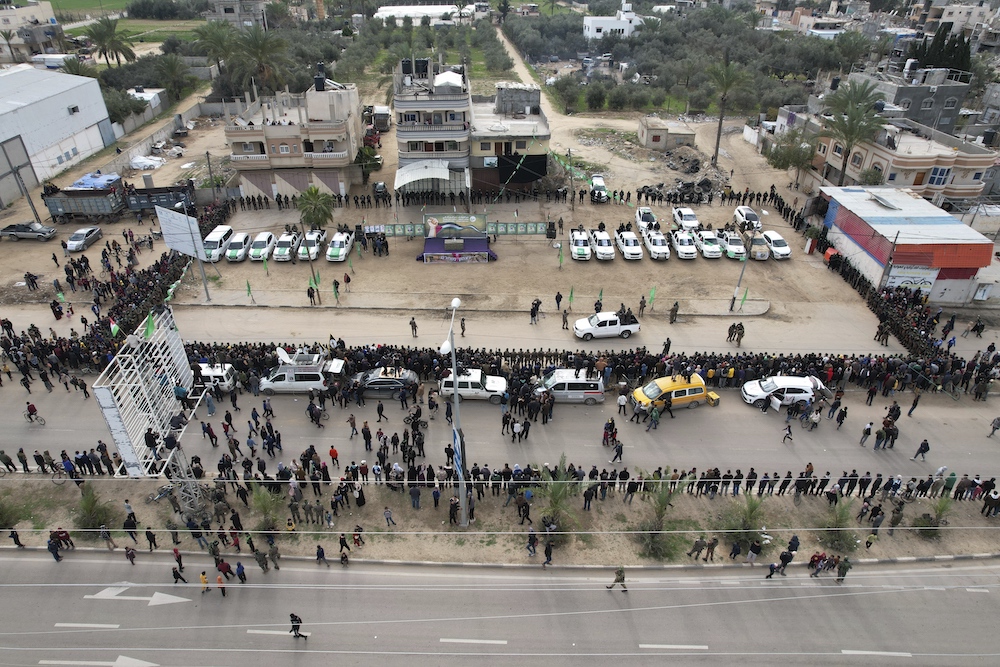ANKARA: Palestinian Authority president Mahmud Abbas told a special session of the Turkish parliament on Thursday that he would travel to Gaza.
He was speaking as health ministry officials in the Hamas-run territory said the death toll from Israel’s assault there had passed 40,000 people.
“I have decided to go to Gaza with other brothers from the Palestinian leadership,” Abbas said to applause from Turkish lawmakers.
Abbas is based in Ramallah in the West Bank, and Gaza Strip is controlled by Palestinian militant group Hamas.
Nobody is allowed to enter the enclave, apart from a handful of humanitarian workers. Abbas has not been to Gaza since Hamas took power in 2007.
“I will do that,” Abbas said in remarks translated into Turkish from Arabic. “Even if this would cost my life.
“Our life is not more worthy than the life of a child,” he added.
He was wearing a white scarf decorated by Turkish and Palestinian flags, as were many of the deputies listening to his speech, and Turkish President Recep Tayyip Erdogan.
Abbas, who added a visit to Turkiye after meeting with Russian President Vladimir Putin in Moscow, said the Palestinian people would stand tall despite the Israeli strikes.
“Gaza is ours as a whole. We don’t accept any solution that would divide our territories,” he told the parliament.
“There cannot be a Palestinian state without Gaza. Our people will not surrender,” he promised.
Abbas, who heads the Fatah Palestinian movement, a rival to Hamas, met Erdogan on Tuesday. Erdogan was present in parliament during the keynote address.
Abbas’s latest trip comes at a tense time during the 10-month Israel-Hamas war.
Efforts for a ceasefire have still not come to anything, and Israel is braced for threatened attacks from Iran and its proxies following the killings of senior Hamas officials in Iran and Lebanon.
From the Turkish parliament floor, Abbas also commemorated Hamas chief Ismail Haniyeh, who was killed in Tehran, and said prayers.
A picture of the slain leader framed by red carnations was seated in one of the front chairs in the parliament as Abbas was delivering a speech.
Haniyeh was a frequent visitor to Turkiye and had close ties with Erdogan, who deemed Hamas as a liberation movement.
Erdogan has been a fierce critic of Israel’s conduct in the war sparked by Hamas’s October 7 attacks, dubbing Israeli Prime Minister Benjamin Netanyahu “the butcher of Gaza.”
Abbas commended Erdogan’s “courageous” stance and criticized the international community’s “silence to the massacres carried out by Israel.”
Abbas tells Turkish parliament he will go to Gaza
https://arab.news/vb5by
Abbas tells Turkish parliament he will go to Gaza

- “I have decided to go to Gaza with other brothers from the Palestinian leadership,” Abbas said to applause from Turkish lawmakers
- “I will do that,” Abbas said in remarks translated into Turkish from Arabic. “Even if this would cost my life




























